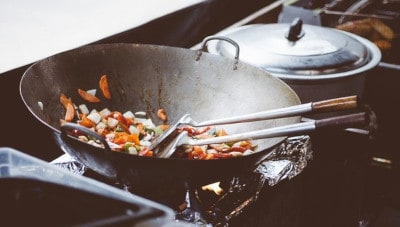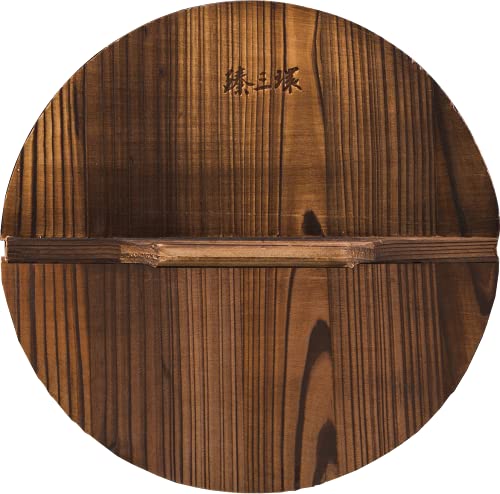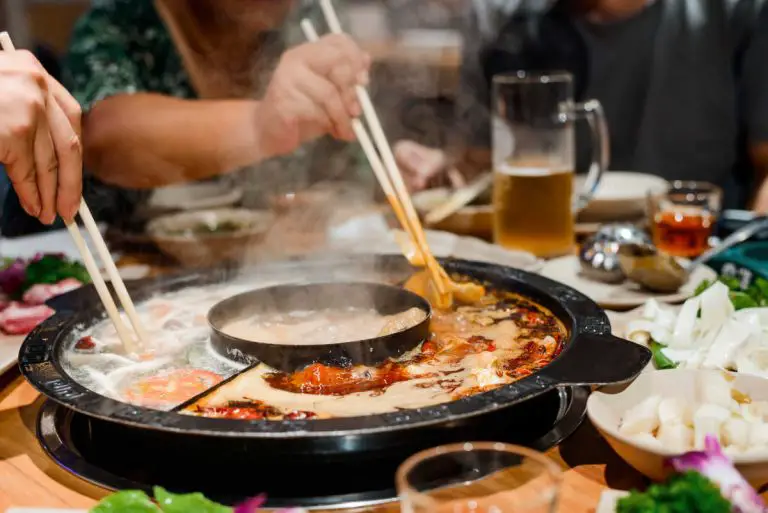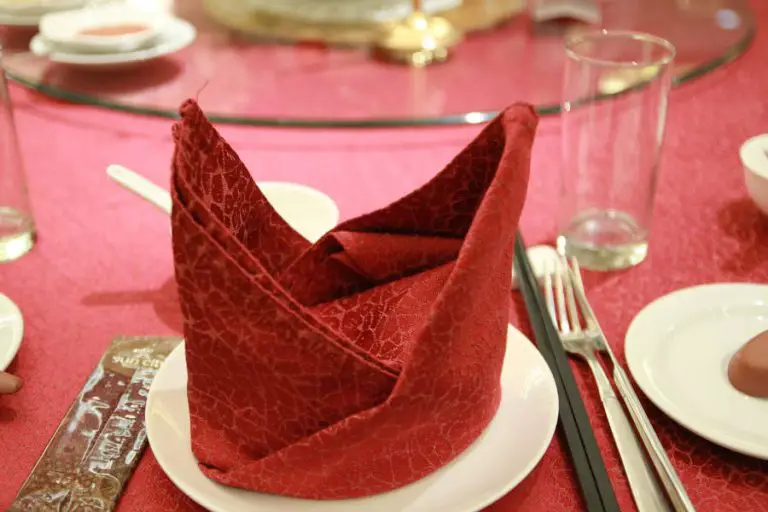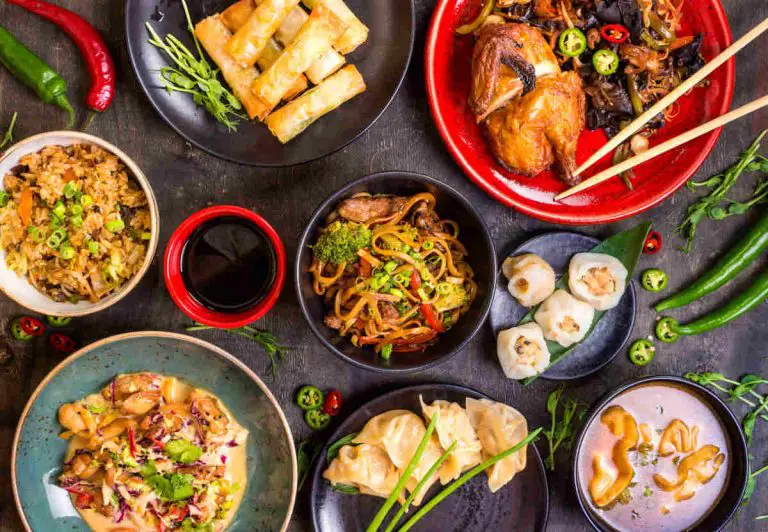The wok, the round-bottomed cooking utensil with high sides, is arguably the most famous Chinese cooking utensil, synonymous with the Chinese cuisine itself. Mainly used for stir-fry cooking, the wok is the staple not only in Chinese cuisine but also throughout Southeast and East Asia.
Here, we will discuss all you need to know about the wok from its history, unique characteristics, and tips on using it effectively.
Let us begin.
What Is a Chinese Wok?
Although there are now many variations in wok designs, the traditional wok is characterized by its rounded bottom and high sides. It is almost always made of metal (nowadays, there are non-stick versions), and can have two side handles or one long handle.
Nowadays, however, flat-bottomed woks are gaining popularity as they are more stable and easier to use on standard ranges.
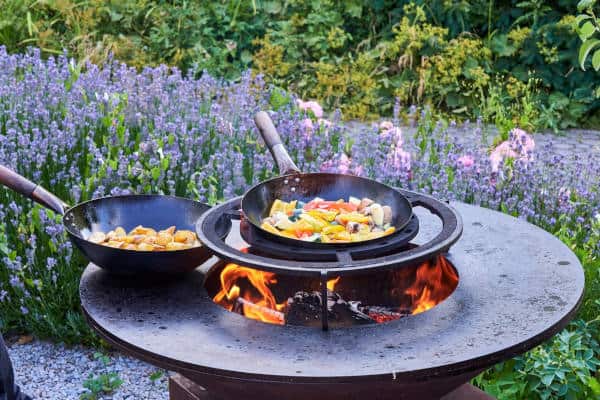
Is The Wok Japanese or Chinese?
This is actually a very common question, and the wok is almost 100% Chinese.
The wok is believed to be invented in China during the times of the Han dynasty, over 2,000 years ago.
Various historians and cuisine experts have various theories as to why the wok was originally invented.
The most plausible theory, however, is that the wok was invented as a versatile and durable cooking utensil due to the shortage of foods back in the Han dynasty. The wok’s unique design allowed people to cook a wide variety of dishes by using the same ingredients and only one utensil (the wok itself) allowing some variety.
This is also why the name “wok” itself was derived from a Cantonese word meaning “a cooking pot”, and the oldest wok found was made of cast iron to ensure longevity. Although there’s still some ongoing debate about whether the wok actually was invented in China, or borrowed from other cultures, the oldest wok can be verified in China around 2,000 years ago (around 200 BCE to 200 CE).
What Makes The Wok Special?
So, why is a wok so special in Chinese cooking especially in stir-frying? Is there any benefit over a standard frying pan?
The main advantage of using a wok over an ordinary frying pan is that it distributes heat a lot more evenly. This is due to the concave shape of the insides, along with the sloping, high-walled sides. The material used to make the wok also helps with this.
So, with better heat distribution, we get less cold spots when stir-frying our dishes, so every food and ingredient in the wok receives heat at roughly the same time.
Another benefit of the wok is its unique shape, which allows us to toss foods more easily. Wok tossing is prevalent in Chinese and Asian cooking and is arguably an art on its own right.
While the wok is most famous for stir-frying, it is also a versatile utensil–again due to its unique shape. Due to its depth, for example, we can use the wok for boiling since we can fill it with water, and also for deep frying. It is also a common practice to smoke or steam foods with a wok by combining it with a rack and/or lid.
However, there’s another special benefit that is unique for stir-frying with the wok, which is the wok hei.
Do you want to learn more about Chinese cuisine? Check out these cooking books – Aff.link
The Wok Hei
We can literally translate “wok hei” as “wok’s heat” or “wok’s thermal radiation”, but translating it is not enough to define the term.
Wok hei, on the other hand, refers to the unique taste produced by wok stir-frying, which is the rich, smoky taste of the food that is stir-fried over a high temperature. This is why stir-fried Chinese and Asian dishes require searing at very high temperatures with a high-pressure stove, to produce the so-called wok hei.
Creating wok hei requires a certain technique on its own, and is often used to measure the skill of a Chinese chef. It can take years before a chef can consistently produce a good amount of wok hei.
However, even beginners can get a decent wok hei flavor with a fairly limited amount of practice.
Related reading: “10 Most Important Chinese Cuisine Cooking Methods“
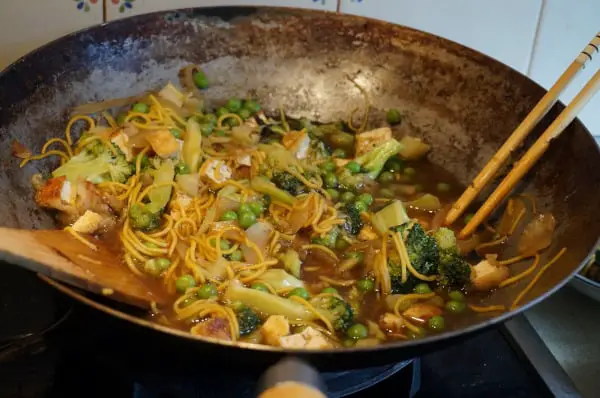
The Chinese Wok Range
A wok range, or wok burner, is a specially-designed propane burner used to heat the wok. There’s not much difference between a Chinese wok range and a standard burner, and the main criteria are that the range should be able to fit the wok and that it can produce enough heat (remember that it takes a lot of heat to produce the wok hei).
So, when looking for a Chinese wok range, the most important things are the size of the wok and the BTU (British Thermal Unit) of the burner. Also, if you want to cook outdoors for one reason or another, make sure the range has enough wind resistance.
Another important factor to consider is how portable is the wok range. Check the legs whether they can be easily disassembled and reassembled, but at the same, the legs shouldn’t be able to be detached easily as this will compromise stability and safety.
Also, the ideal wok range should be heavy enough that it can remain stable and can hold the wok with full food, but at the same time light enough depending on your need for portability.
Remember that the wok burner can be used for other purposes too. So, figure out whether you’ll prefer a heavy, sturdy burner or a portable burner that you can travel with.
Related reading: “23 Chinese Cooking Utensils You Should Know“
What Size of Wok Should I Get?
Wok sizes vary from 10 inches to more than 20 inches in diameters. However, the most common size in Chinese cuisine is 13 inches. We’d generally recommend a 13-inch or 14-inch wok, but check your wok range or your stove, and get a wok that can fit the size of your range.
Wok Shape
As discussed, woks traditionally have rounded bottoms, but now flat-bottomed woks are also pretty common. It’s important to note that not all stoves and ranges can perfectly hold a round-bottomed wok.
The Chinese wok range has a round opening in the middle to accommodate the round-bottomed wok’s design perfectly. The round-bottomed design actually has its benefit: it allows even heat around the sides of the entire wok. This will help in creating the wok hei especially for smaller portions of foods.
So, if you do have a wok range or wok burner, you should definitely get a round-bottomed wok. However, if you only use a traditional burner, then you can either get a wok ring (an accessory for traditional stoves and burners to accommodate the round-bottomed wok), or get a flat-bottomed wok instead.
Are Carbon Steel Woks Any Good?
Carbon steel woks are at the moment, the most popular woks and are very common in most Chinese restaurants. Carbon steel is both sturdy but at the same time not very heavy, and carbon steel can heat up quickly and evenly.
Also, carbon steel woks are relatively affordable, and these are some of the reasons why most Chinese restaurants use carbon steel woks in various sizes and shapes.
Chinese Wok Tools To Get
Wok ring
If you don’t have a proper wok range, you can transform your stove into one with a wok ring. The ring prevents round-bottomed woks from wobbling, giving it stability.
Wok cover or lid
A good cover or lid will retain the heat of the food and at the same time will prevent hot oil, broth, or water from splattering. Useful when boiling or deep-frying with a wok.
Wok Brush
The wok brush can properly clean the wok without needing any detergents, while at the same time won’t ruin the wok’s surface.
The wok brush is larger than a typical dish brush, allowing us to clean the wok much faster (and easier). Especially useful for cleaning sticky sauces, egg, cheese, and other sticky ingredients.
Related reading: Exploring China’s Culinary Diversity: China’s Regional Delicacies – Opens in new tab
Wok Spatula and wok hoak
It’s handy to have a wok spatula (like a scope/hook) that can handle large amounts of foods with a single wrist movement. A wok hoak (ladle) will also help in cooking things like fried rice and also in boiling foods with your wok.
Strainer
A Chinese strainer is important for frying and straining, to lift deep-fried or boiled foods from the wok.
Steam rack
We can smoke or steam foods with a wok by utilizing this steam rack. The steaming rack can go in the wok to hold up a heatproof dish.
How To Clean Your Wok
Cleaning your wok will help it to last longer, and it’s best to clean it every time to use it (no matter what you are cooking). This will keep the wok clean and so you can use it right away next time.
Fortunately, cleaning the wok is a pretty simple process and doesn’t require any special tools:
- Rine the wok in warm or hot water
- Use a non-metallic scrubber (any type) and scrub away the food particles gently. If there are stuck particles, you may want to soak the wok in hot waters for several minutes and try again. This will help preserve the wok’s surface.
- Rinse the wok until it’s cleaned properly
- Dry the wok’s interior and exterior. You can use a clean rag cloth or paper towel
- Place the wok on your burner and turn it to medium heat to finish drying the wok (if you need to dry it quickly)
- Wipe the wok with a small amount of vegetable oil. This is useful to prevent rusting, and store the wok for the next use
End Words
The wok is obviously an essential utensil for Chinese and Asian cooking, and it only takes a bit of practice to use the wok for stir-frying or other methods.
The wok is a versatile utensil, and you can use it for a variety of recipes with various cooking methods from stir-fry dishes to boiled, deep-fried, and even steamed dish. Think of any famous Chinese dish, and chances are, there are ways to cook it with a wok.
Click here to see some Chinese Woks and Utensils.– Aff.link
Stay in Touch
 Join our newsletter by using the forms on this website or click here!
Join our newsletter by using the forms on this website or click here! Follow us on Google News
Follow us on Google News Follow us on Facebook
Follow us on Facebook
Featured Image from Pexels

